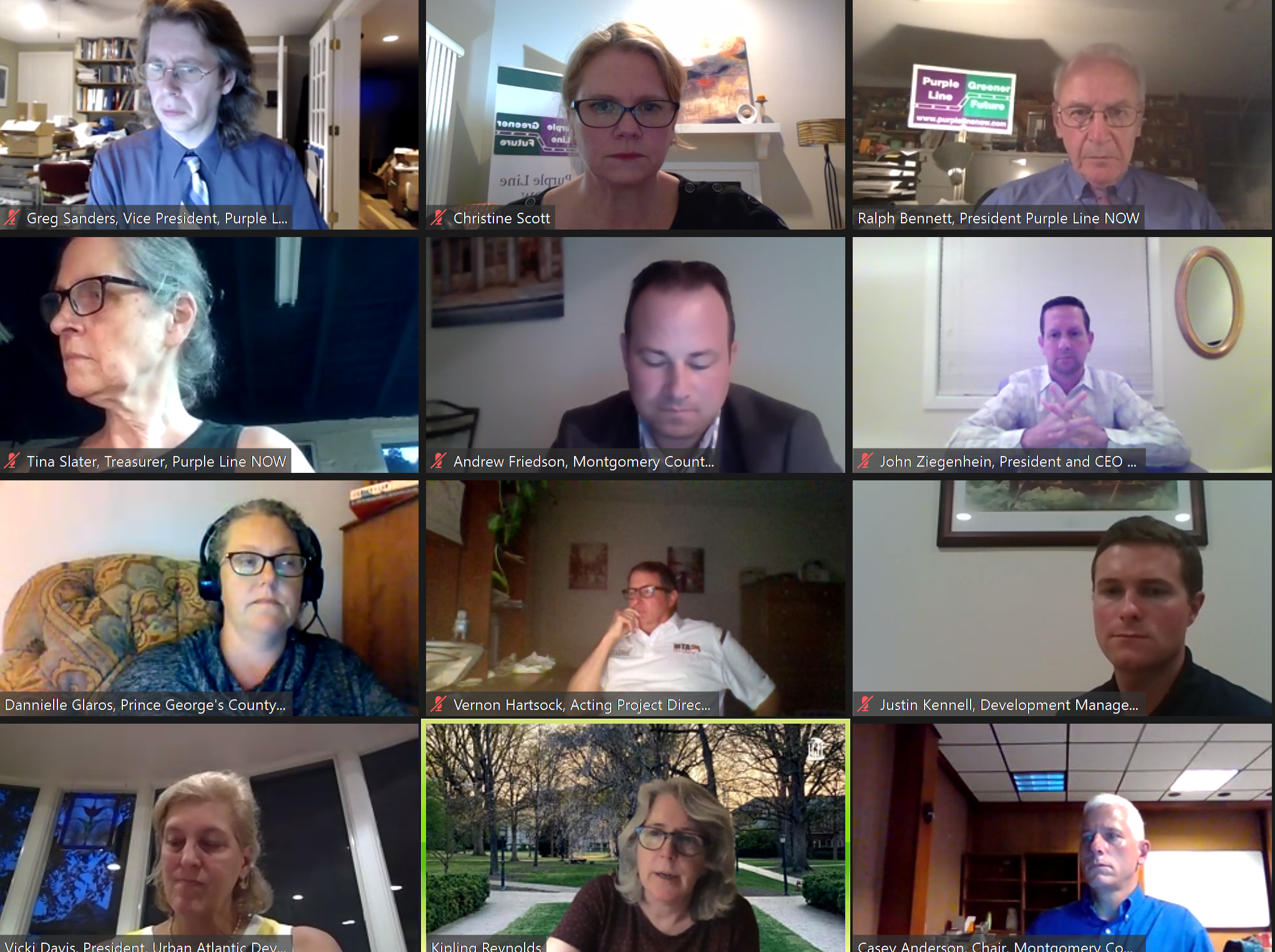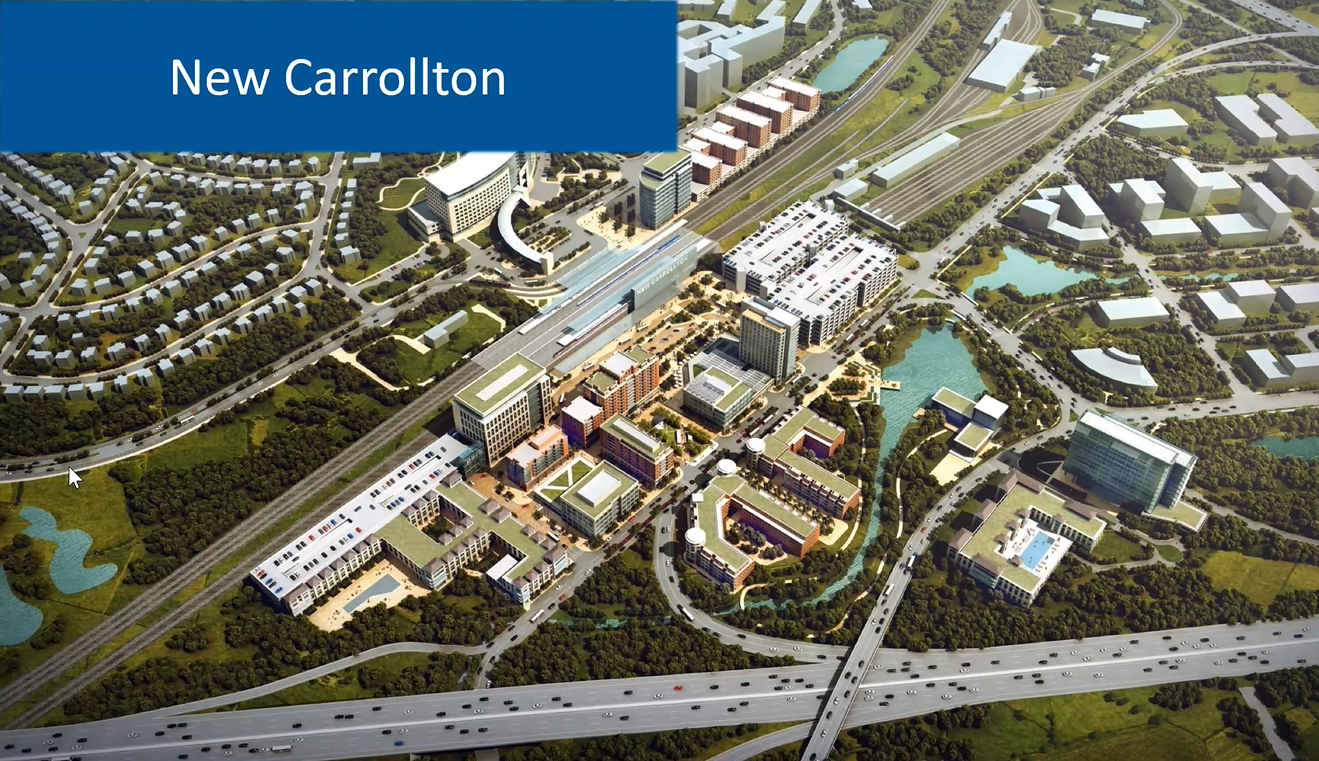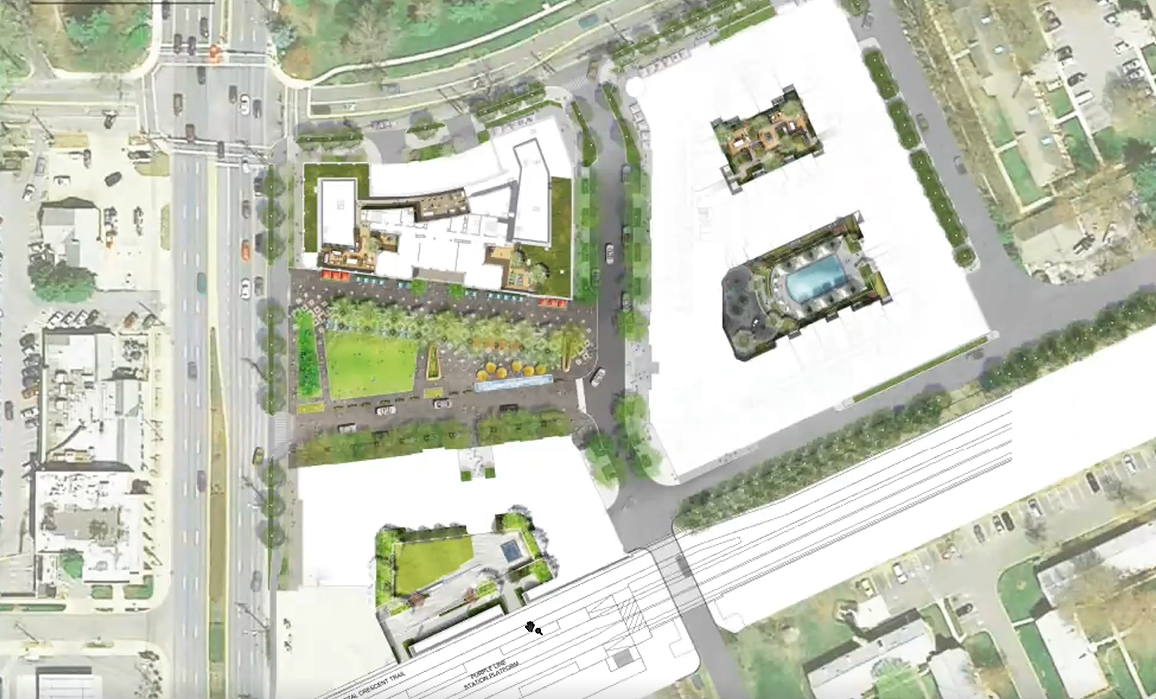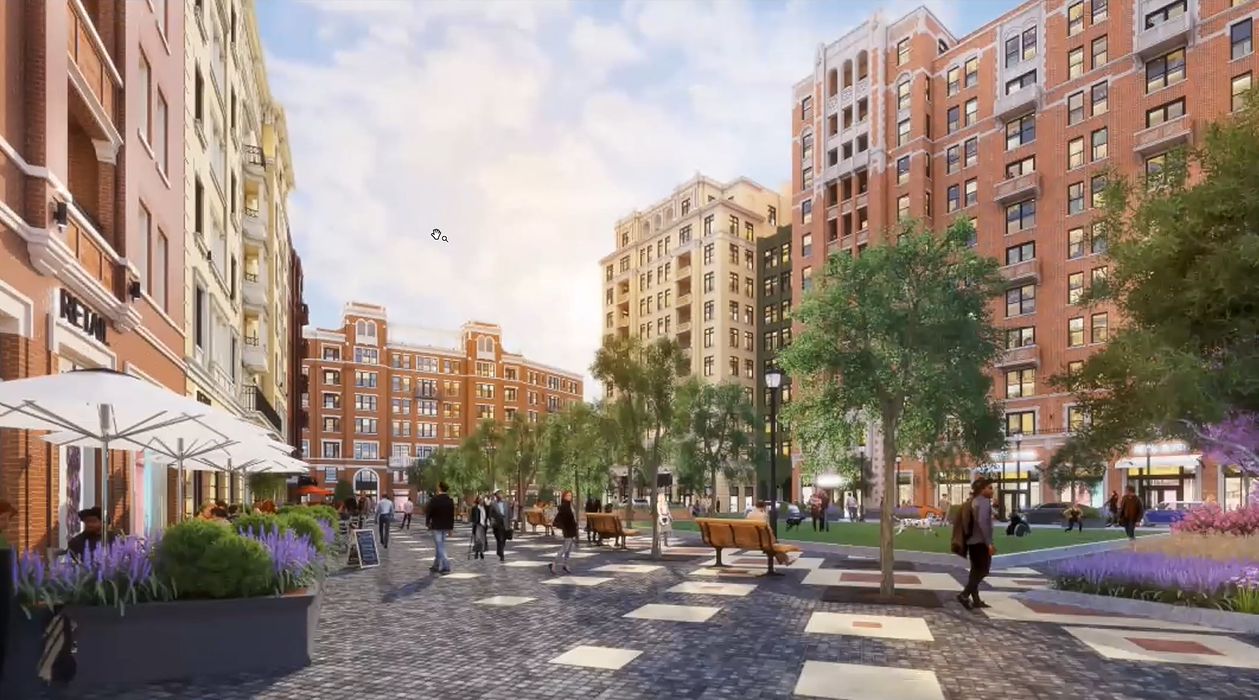In today's edition of Purple Line NOW News, here's what you'll find:
- Recap and Highlights from the August 20 Webinar
Stay Safe!
As the state continues to open and schools begin classes, we hope each of you are remaining healthy during this continuing pandemic.
Stay Connected!
Make sure you are signed up for timely alerts from Purple Line NOW via our Twitter and Facebook pages, and at our website Purple Line NOW.
 |
PURPLE LINE NEWS AND EVENTS |
Please Help Us Continue Our Work!
In order for us to provide events like last month's forum for you at no cost and information like that contained in this newsletter, we ask you to have a look at the generous donors who make our work possible and, if you can, take a moment to join them. The black DONATE button below will take you directly to our donation page. Thank you to everyone!
FEATURED DONORS
THE CHEVY CHASE LAND COMPANY
THE MALLOY AND SANDERS FAMILY
TINA, DON, AND JESSIE SLATER
SUPPORTING DONORS
ATU Local 689
John Carroll
Nancy and Rob Soreng
Eric Talbot
ENGINEERS
Anne Ambler and John Fay
Ralph Bennett
Steven Hurtt
John Robinson
CONDUCTORS
Nick Brand
Bee and Brian Ditzler
The Martin Architectural Group
Mary Lanigan
Christine Scott and JohnR Llewellyn
COMMUTERS
Elizabeth Barbehenn, Tyler Christensen, Sean Dobson, Jonathan Elkind, Elaine Emling, Joseph Fainberg, Neil Greene, William Holleran, Melanie Isis, Ginanne Italiano, Greg Madden, Debbie and Ray Marquardt, Anita Morrison, Mark Posner, Frederick Schultz, Shirley Storms, Jerry Withers, College Park Mayor Patrick Wojahn
PASSENGERS
Merrie Blocker, Steve Brigham, Cathy Carr, Kris Colby, Nick Finio, Patrick Flaherty, Bradley Green, David Helms, Alexandra Knox, Daniel Marcin, Judith Morenoff, Tom Pogue, Martin Posthumus, John Undeland, Julie Zavala
Purple Line NOW, as you know, has been around for decades and we work hard to stay on top of the news, answer your questions, publish a bi-weekly newsletter, and host these informative fora several times a year. We don’t hold special event fundraisers, but when our coffers get low, we ask those of you who can, to consider a donation to Purple Line NOW. We will publicize your name (or your organization’s name) on our website and at our events as a way of thanking you and letting the community know how much you care about seeing this project finally become a reality.
We appreciate all donations, small or large. Thank you, thank you for your help in making this event a success!
 |
CONSTRUCTION NEWS TO KNOW |
Getting Ready for the First Purple Line Ride - Webinar Recap
After many years of hosting in-person fora for the communities along the Purple Line corridor, Purple Line NOW hosted its first virtual forum on Thursday, August 20, 2020 with about 100 people in attendance. We had a jam-packed schedule of speakers, each of whom brought their own vision of what we can expect when the project is complete and we are finally able to hop on board to take that first ride!
Tonight's event looked at how we can prepare for the economic benefits of the Purple Line, as well as related questions of how we can help make sure that existing residents and businesses can participate in this brighter future.
For those who were not able to make the event, or those who want a refresher, we provide this recap which highlights some of the information our speakers shared with us. If you would like to listen to the webinar in full, a link is at the bottom of this recap.
Attendees were asked to submit questions in advance and we had a bunch! Answers to many of those questions are after the recap, but if you don’t see an answer to your specific question, please know that we are reaching out to the appropriate folks to gather that information for you and will either contact you directly (if your question was quite specific) or print answers here in an upcoming newsletter.

Purple Line NOW Board President, Ralph Bennett welcomed and thanked our panel, which included:
• Vernon G. Hartsock, PMP, Acting Project Director, Transit Development and Delivery, Maryland Transit Administration;
• The Honorable Dannielle M. Glaros, Prince George’s County Council Member (District 3);
• The Honorable Andrew Friedson, Montgomery County Council Member (District 1);
• Kipling Reynolds, AICP, Division Chief, Community Planning Prince George's County Planning Department;
• Casey Anderson, Chair, Montgomery County Planning Board; Vicki Davis, President, Urban Atlantic Development;
• John L. Ziegenhein, President and CEO of Chevy Chase Land;
• Justin Kennell, Development Manager, Bozzuto Development Company.
Greg Sanders, Vice President of our Purple Line NOW spoke first and shared why he gives not only of his time as a volunteer for the organization, which was begun by his father, but also donates to Purple Line NOW. “With over 150,000 people living a half mile or less from a Purple Line station, east-west connectivity a quick under-10 minute ride from Silver Spring to Bethesda, and a forecast of removing 17,000 cars from the road with 69,000 new riders by 2040,” Greg told the group, “the Purple Line is important to our region.” Greg highlighted the fact that for much of its history, Purple Line NOW has convened an active group of labor, environmentalists, business,and transit activists, all volunteers who help guide its mission.
Vernon Hartsock, who has been with MTA for 29 years, introduced himself to our attendees. He was the chief engineer for the project in a previous capacity, and going even further back, told us he comes from a railroad family, so this was in his blood! Eleven years ago, Vernon worked with Mike Madden and authored the engineering support contracts. Vernon’s enthusiasm for the project was evident when he said that "it was a dream to be an engineer on such a project!”
Vernon also introduced Matt Pollack who is the new Executive Director on the project, coming to MTA from private industry as a transit executive. While Mr. Hartsock was not able to discuss the issues of the open court case or the ongoing negotiations, he did say that he wanted to share his hope that it will be settled soon, and to reiterate that “the state is fully committed to the completion of the Purple Line project regardless of how those negotiations end."
Next up to speak was Prince George’s Councilmember Dannielle Glaros who updated us about some of the construction work that is ongoing right now in Prince George's County. She also discussed the Housing Action Plan put together by the Purple Line Corridor Coalition. The pandemic has only accelerated many of the concerns on housing.

Councilmember Glaros has nine of the 21 stops in her district and said, “with roads closed and her district heavily under construction, we are eager for the project to finish.” She went on to say that, “with the connection to MARC, WMATA, and Montgomery County, a lot is at stake with the Purple Line.”
Montgomery County Councilmember Andrew Friedson spoke to some of the economic development history of his district, even quoting Washington Nationals manager Dave Martinez, who famously said, "bumpy rides lead to beautiful places!" Councilmember Friedson noted the importance of the environmental, economic, and east-west connectivity and said that the “benefits have only grown since the project was first conceived.” He noted that Purple Line NOW worked closely with him, along with his colleagues, to advocate for funding the tunnel under Wisconsin Avenue, which is scheduled to open in 2026. He said that he hears from residents that, regardless of who ultimately is going to finish building the project, they want no further delays.
The Purple Line is already seeing value, even before opening day with headquarters, residential, and retail moving in throughout the corridor. Councilmember Friedson ended his remarks speaking about affordable housing, saying that he and his colleagues will have to be creative with all the other challenges facing the region, but he is confident that they can succeed.
Kip Reynolds, Division Chief for Community Planning, Prince George's County Planning Department briefed attendees on a range of efforts ongoing in Prince George’s county, including a number of pedestrian and bike improvements along University Boulevard, Riggs Road, and Cool Springs, and improved way-finding for residents and businesses which will include signage to identify the new Purple Line stations, parks, and community assets. Kip also provided a link to an app that they have developed to share information about the Purple Line in Prince George's County: Purple Line In Our Community.
Casey Anderson, Chair of the Montgomery County Planning Board, gave a concrete demonstration of some of the benefits of the Purple Line that cause the increase in housing values. Improved connection will be important, not just to future residents, but for those who live there now, and will dramatically improve access to jobs in the corridor. He also spoke to why project costs had increased, citing the choice of opponents to litigate the issue by “finding one federal judge that followed them down the rabbit hole and cost the public hundreds of millions of dollars.”
Casey also added that another lesson learned and something that has driven up the cost is that transit projects do not have the same “quick-take” authority that road projects do, emphasizing that MTA and transit projects need a similar level of authority, to avoid time and cost increases stemming from a prolonged property acquisition process. Casey said one of the things he is most looking forward to after the Purple Line opens is the ability to travel to Maryland’s flagship university for sports and other activities.
Vicki Davis, President of Urban Atlantic Development, was an early supporter of the Purple Line and transit-oriented development. She related to the crowd some of the development that her company is leading around New Carrollton, at the eastern terminus of the line. She spoke about new and planned commercial and residential space, some of it already in place as major job providers like Kaiser Permanente have moved in. She also shared some of the exciting changes planned, such as a wetland restoration effort and art planned from plazas to parking garages.

Vicki also mentioned the new WMATA headquarters with 350K square feet of space and 1,300 employees which will break ground in October, along with other development already in place, including an interactive park, a multi-family residential development, and a new 1,900 car garage serving many who take the train to New York and other parts from the New Carrollton station. She highlighted the sense of space they are trying to create with illustrative ideas and integrating art and light into the project.

John L. Ziegenhein, President and CEO of Chevy Chase Land and Justin Kennell, Development Manager at Bozzuto, spoke to the history of their project at Chevy Chase Lake. The company has held the property since 1892, back when it was originally a streetcar suburb. The lake was formed to be a power source for the original trams! Justin said that with the installation of the Purple Line station, they feel like their project "is coming full circle in bringing back public transportation history to the area." They are building new housing that emphasizes tranquility and charm and includes ground-level retail, anchored by a grocery store. There is going to be a Purple Line plaza that directly connects to the station and the Capital Crescent Trail.

Their project is being built in two phases, with the first well underway and about 60% complete. Some of the architecture will include a grand stair, which will be a passageway feature from the new station to the development and include art, lighting features, convenience, and mobility.

Finally, here are answers to some of the questions sent in from attendees:
1) Are there more plans for development in the works along the Purple Line route in both counties that haven't been approved yet?
Kip Reynolds: Prince George’s County does have pending applications, but things are on hold while the Countywide Map Amendment process is finished up which will facilitate development.
Casey Anderson: Long Branch development has some potential, but right now we have to have housing infrastructure first.
2) I have driven in the past week along several miles of the Purple Line path and notice few workers, and alarmingly, the track work on Arliss Street was cancelled. Did the judge require work to continue at a regular pace until the deadline?
Answer: In preparation for the original stoppage, some of the sites were indeed shutting down in the weeks prior, noting that some of the larger equipment sites had to be secured, etc. But, once the continuation order was announced, all work is ramping back up and they are fully complying with the directive.
3) Many large trees were cut down along the Purple Line corridor. How are these trees going to be replaced?
Vernon Hartsock: MTA is committed to replanting and leaving things in better conditions than they found them. Trees have been a hot topic for a long time. All loss of trees is being mitigated in accordance with the Maryland Forest Conservation Act.
Below are restrictions that impact where trees can be planted along the alignment. All of this has been taken into consideration when developing the landscape plans (which are posted online).
• Sight lines: 20 feet from the edge of travel lane primary at intersections
• Utility relocations: Utility offsets are dictated by the individual utility owners but are generally within the range of 10 – 20 feet
• Catenary wires: 20 feet from the catenary wire
• Right-of-Way: The Purple Line has done everything possible to minimize the limit of disturbance in order to minimize the impact to the community. We cannot plant anything outside of our project’s limit of disturbance.
• Medians must be greater than 6 feet in width to host any plantings.
We recommend that if a homeowner is interested in trees on their property where we removed one, they can contact their county and work directly with their tree programs to get a new tree. We are only able to plant with our right-of-way and not on a property owner’s private property.
Casey Anderson: Casey provided a slide before redevelopment at Pike & Rose and after development, and drew our attention to the “ocean of asphalt” in the before photo and the abundance of green in the second. He emphasized that many of the sites that are being redeveloped will be required to have trees replanted, sometimes in other areas, but that must be weighed against the benefits of providing transit, showing in the slide the environmental benefits with urban infill with storm water upgrades instead of run-off on untreated asphalt.

4) What will happen to existing affordable housing along the Purple Line?
Casey Anderson: It is important to have supply to support the workforce, but, he said, if we can’t manage that, we won’t be able to provide affordability. He went on to say that we need to increase the housing supply, and that we must include both affordable housing and market priced housing.

Andrew Friedson: We must have a creative approach, with a variety of solutions. We will want to maintain specific affordable housing providers within the county. He went on to say that we do not want a “one size fits all” approach and will work on a case-by-case basis to build enough housing to keep up with the demand.
Dannielle Glaros: Important to maintain and grow diversity and livelihoods in Prince George’s county. She is working hard with other councilmembers to keep small businesses alive during the pandemic currently.
5) How much will it cost to ride the Purple Line? Can we use our SmartTrip card? Will kids ride free?
Vernon Hartsock: Ticket prices have not been set yet. Not sure whether the SmarTrip card will be used – or another platform like cellphone app, etc. They will make an announcement when those decisions have been made.
Dannielle Glaros: Reminded everyone that the five University of Maryland stops will be free to University staff and students!
6) How are the Counties contemplating or already changing current zoning of communities for the stations that are adjacent to residential areas, like Woodside/16th St and Dale Drive?
Casey Anderson: Hopeful for redevelopment along 16th Street that is more ambitious and progressive. Potential for mid-use and retail. In Lyttonsville, residential and streetscape groundwork has been laid, but much will depend on the private sector.
Dannielle Glaros: They will be updating zoning ordinances after they finish the countywide map amendment process.
7) When will we be able to see the mock-up of Bonifant Street between Fenton & Georgia Ave?

8) Our question concerns train noise. We live near the Talbot Avenue bridge, and as Purple Line construction continues, we have noticed a higher incidence of trains using their horns in the late night and predawn hours, considerably exceeding the standard allowable decibel level for street noise. Is this expected to continue and/or increase once the Purple Line is operational and foot traffic increases? If so, this will cause the area to be unlivable for those who live near the tracks.
Vernon Hartsock: Noise is a prime concern and they are installing noise walls at various points, but we have zero control over what CSX does. It is CSX policy to sound a horn when approaching an at grade crossing, which there is one north of Talbot Avenue that I believe is what the homeowners are hearing. It is also their policy to sound the horn when entering a construction zone (such as the area of the Talbot Avenue Bridge). Both of which are safety requirements.
Thanks to our fantastic panel, to all attendees who made time to watch and listen, and for all the good questions that were submitted!
As we mentioned, we are working to get answers to as many of the questions asked that we can. You can watch the video of the webinar here: PLN Webinar Aug 20 2020. (Make sure you click the start arrow to begin the webinar.)


